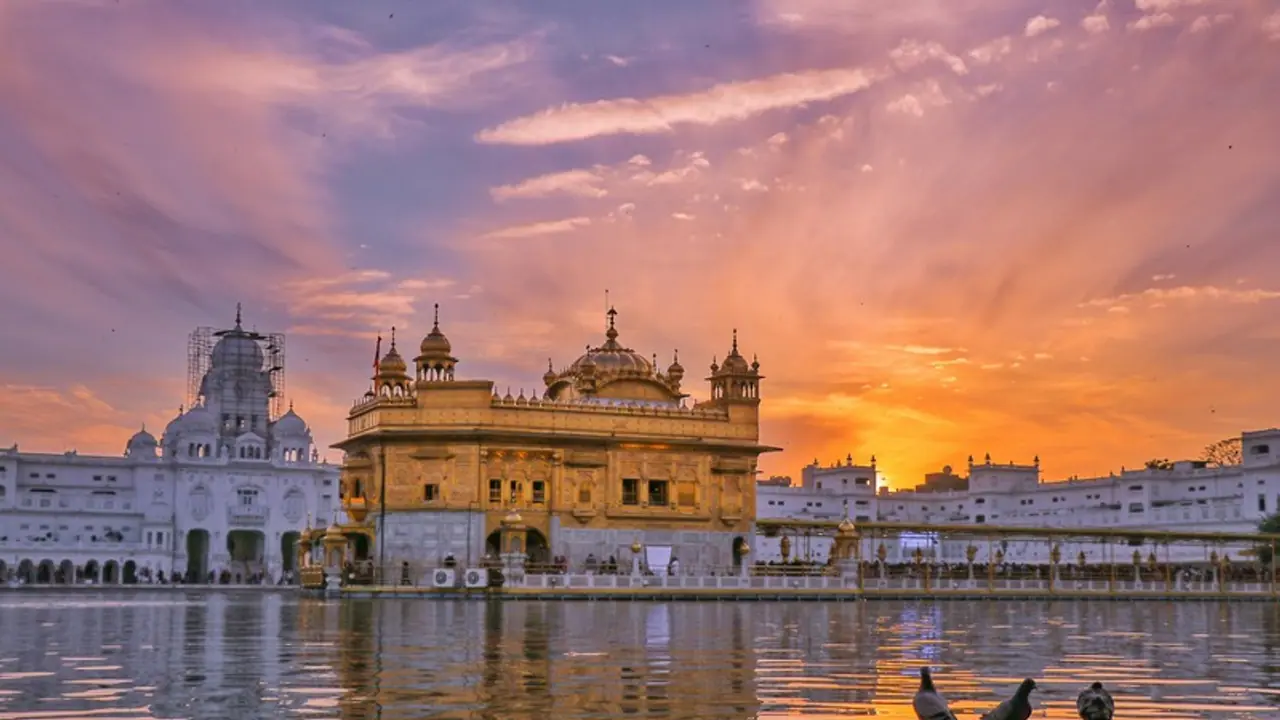This is not just the world's largest kitchen, but a living example of what can be achieved with service and devotion. It's a testament to spiritual peace and humanity. Everyone should visit this place at least once.
India is a land of immense diversity, offering countless places to explore and experience. Among its many attractions, the temples and gurudwaras stand out—not just for their architectural beauty, but also for their unique spiritual and cultural significance recognized around the world. A shining example of this is the Golden Temple in Amritsar, Punjab, also known as Sri Harmandir Sahib, the holiest pilgrimage site for Sikhs.
Located beside the temple is the Amrit Sarovar, a sacred pool believed to provide spiritual cleansing and blessings to those who bathe in it. The Golden Temple is also known for its daily practice of service through the 'Guru Ka Langar', the world’s largest free community kitchen, where thousands are fed every day regardless of background—a true reflection of unity, equality, and compassion.
It is said that one lakh devotees eat here every day, and on special occasions, this number reaches two lakhs. Remarkably, this service operates 24/7. Let's delve into some key aspects of the Langar.
Tradition and Purpose of Langar
Guru Nanak Dev Ji started this Langar in 1481. Its purpose was to allow everyone, regardless of religion, caste, or class, to sit together and eat equally. It is considered a symbol of equality and the spirit of service.
Two Large Halls in the Golden Temple
Two large halls are built in the Golden Temple where thousands of people sit and eat together in each shift. The food is entirely free, and hundreds of volunteers manage the service. Interestingly, these volunteers are not professional cooks or waiters but ordinary people serving with devotion.
Inside the Kitchen
This kitchen uses about 100 quintals of wheat, 25 quintals of pulses, 10 quintals of rice, 5,000 liters of milk, 10 quintals of sugar, 5 quintals of pure ghee, and vegetables daily. Over 100 cylinders are also used. More than 100 employees manage the kitchen. A special machine capable of making 25,000 rotis in an hour is also installed. Dal, vegetables, and kheer are prepared in large vessels. No money is charged.
This Langar receives no government funding; preparations are made from donations to the temple. People contribute money, grains, milk, ghee, or their services. Sikhism has the tradition of 'Dasvandh,' donating one-tenth of one's earnings for service, to which millions contribute.
Pre-Decided Menu
Over a lakh people eat at this Langar daily, served by volunteers. After eating, people queue up, and the hall is cleaned immediately using a machine. The food is delicious, and the menu is pre-decided.
More Than Just Food, a Message
This Langar not only satisfies hunger but also conveys a message of humanity and unity. Rich-poor, Hindu-Muslim, Indian-foreigner, everyone sits and eats together as they wish. This scene envisions a society without discrimination. All gurudwaras worldwide have Langar, but the Golden Temple's Langar is unique.
Reaching the Golden Temple
If you plan to visit the Golden Temple, you can reach it by air, road, or train. The nearest airport is Amritsar International Airport, from where you can take a direct taxi. Amritsar railway station is also very close. You can also travel by road.
